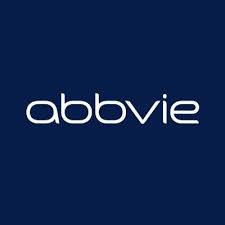Abbive Q3 2024 $ABBV (+1,89 %)

Financial performance
Adjusted EPS for the third quarter was USD 3.00, exceeding the midpoint of guidance by USD 0.10, despite an unfavorable impact of USD 0.04 from R&D spend on acquired IP. Total revenues amounted to nearly USD 14.5 billion, showing strong operational growth of 4.9%, net of a negative currency impact of 1.1%.
Balance sheet overview
Cash and cash equivalents at the end of September amounted to almost USD 7.3 billion.
Details of the income statement
Net revenue for the third quarter amounted to USD 14,460 million, an increase compared to USD 13,927 million in the previous year. Operating income increased significantly to $3,831 million compared to $2,281 million in the prior year. However, net income attributable to AbbVie Inc. decreased to USD 1,561 million compared to USD 1,778 million in the prior year period.
Cash flow overview
Free cash flow was over $11 billion, including approximately $1.5 billion in SKYRIZI license fees in the first nine months of the year.
Key performance indicators and profitability metrics
Adjusted operating margin was 46.7% of sales. The adjusted gross margin was 84.4 %, while adjusted R&D costs amounted to 14.2 % and SG&A costs to 23 % of sales. The adjusted tax rate for the third quarter was 16.2%.
Segment information
- Immunology: Total revenues of over USD 7 billion, with SKYRIZI global sales up 51.5 %.
- Oncology: Total revenues of around USD 1.7 billion.
- Neuroscience: Total revenues of more than USD 2.3 billion, an operational increase of 16%.
- Aesthetics: Global revenues of USD 5.3 billion, a decrease of USD 200 million, mainly due to lower Juvederm volumes.
Competitive position
AbbVie continues to see strong growth in SKYRIZI and RINVOQ and has gained significant market share in the immunology portfolio. The company is also investing in early-stage development projects to secure future growth in the long term.
Outlook and management statements
AbbVie raised the midpoint of its adjusted EPS guidance for the full year to a range of $10.90 to $10.94. Total net sales for the year are estimated to be approximately $56 billion, an increase of $500 million.
Risks and opportunities
The decline in sales of HUMIRA due to competition from biosimilars will be offset by growth in SKYRIZI and RINVOQ. However, the economic situation, particularly in China, is adversely affecting the aesthetics segment, especially Juvederm.
Summary
AbbVie reported a solid financial performance in the third quarter, driven by significant growth outside the HUMIRA portfolio, particularly in immunology and neuroscience. The company is strategically investing in R&D and early-stage drug development to ensure long-term growth. Despite challenges in the aesthetics segment and the decline in HUMIRA sales, AbbVie remains confident in its growth projections, supported by the strong performance of SKYRIZI and RINVOQ. The company has raised its full-year revenue and EPS guidance, reflecting strong operational execution and a strategic focus on innovation and market expansion.
Positives:
- Strong growth in key areas: AbbVie's platform outside of HUMIRA, particularly SKYRIZI and RINVOQ, recorded impressive growth. SKYRIZI global sales increased by 51.5%, while RINVOQ sales increased by 47.4% operationally.
- Robust financial performance: The company reported adjusted earnings per share of USD 3.00, beating the midpoint of guidance by USD 0.10.
- Successful strategic acquisitions: The acquisition of Cerevel Therapeutics strengthens AbbVie's neuroscience pipeline, particularly by providing access to potential compounds such as emraclidine and tavapadone.
- Dividend increase: AbbVie announced a 5.8% increase in its quarterly cash dividend, reflecting the company's confidence in its long-term growth prospects.
- Positive pipeline developments: The company received FDA approval for VYALEV, a transformative therapy for advanced Parkinson's disease, and announced positive Phase III results for tavapadone.
Negatives:
- Decline in HUMIRA sales: HUMIRA's global sales declined by 36.5% operationally due to competition from biosimilars, weighing on overall revenues.
- Challenges in the aesthetics segment: The Juvederm product segment in particular struggled due to economic conditions, resulting in a 19.7% decline in global net sales of Juvederm.
- Pressure on VRAYLAR sales: VRAYLAR sales were impacted by slightly unfavorable channel distribution, resulting in a reduction of the forecast by USD 100 million.
- Economic uncertainty in key markets: Economic factors, particularly in China, continue to weigh on consumer behavior and impact the aesthetics segment.
- Operational challenges in Neuroscience: Despite strong growth, there are concerns regarding the management of placebo effects in ongoing studies that could impact future results.



